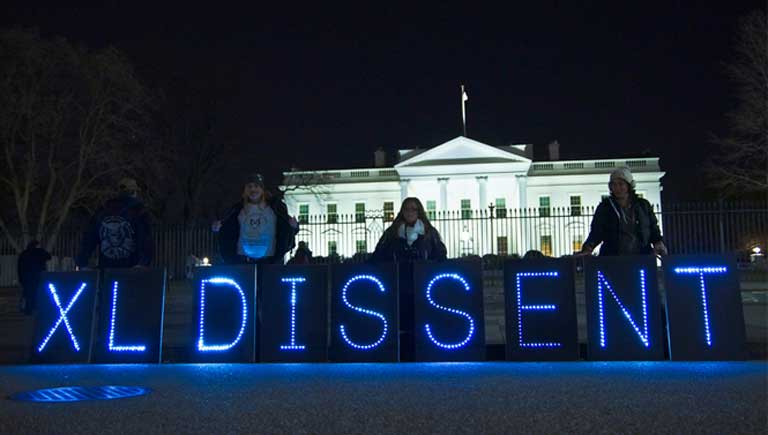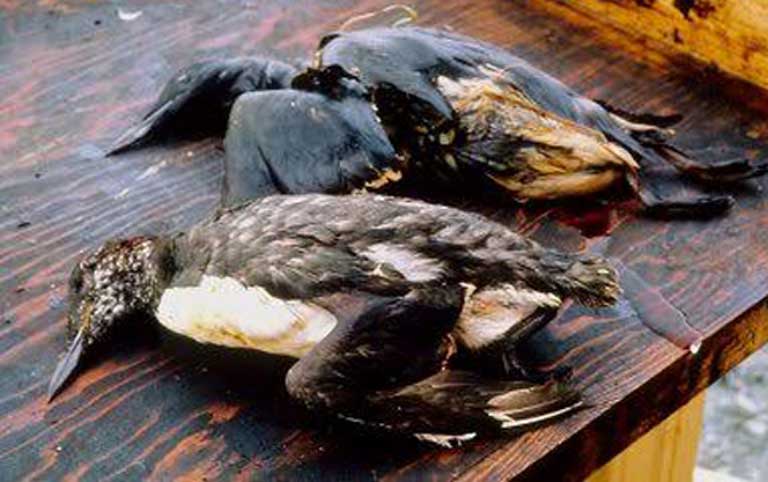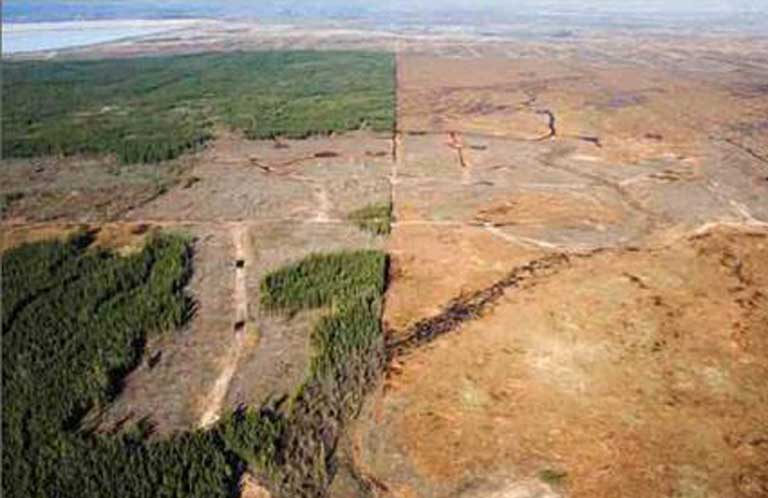- On Monday, the Nebraska Public Service Commission (NPSC) released its decision regarding the permitting of the TransCanada Keystone XL pipeline through the Midwest state. The NPSC rejected the company’s preferred route, but permitted an alternate route.
- While major media outlets hailed the decision as a victory for TransCanada, and for President Trump who has reversed Barack Obama’s rejection of the project, activists believe the NPSC action has the potential to long delay or even kill Keystone, which would bring Alberta Tar Sands bitumen south into the U.S. to link up with other lines going to the Gulf Coast and foreign markets.
- Activists point out that the selection of the alternate route means that TransCanada must go back to the drawing board, spending more money on years of planning, negotiating with landowners, and bucking new legal opposition in a political climate where public opposition to tar sands pipelines by activist coalitions as diverse as cattle ranchers and Indian nations has turned fierce.
- The Nebraska decision was made within days of a TransCanada pipeline spill in South Dakota that dumped 5,000 barrels of bitumen, though the NPSC said that the spill had no influence on their decision. TransCanada says it will announce its future plans for Keystone XL in late November or December.

On Monday, when the Nebraska Public Service Commission (NPSC) released a decision allowing TransCanada’s Keystone XL pipeline to go forward – but disallowing the company its preferred route, and approving an alternate route across the state – pipeline opponents were ready with fiery rhetoric: “The Treaty Alliance of Tribes up and down the Keystone XL pipeline route will be standing strong along with all our other allies to beat back this threat to our water, our people, and our future,” said Larry Wright, Chairman of the Southern Ponca.
Wright was referring to the Treaty Alliance Against Tar Sands, an agreement signed by 180 native nations in Canada and the United States unifying them in total opposition to the construction of all pipelines – including Keystone XL – intended to move bitumen out of Canada’s Alberta tar sands, a project which the alliance views as an existential threat to its way of life, and life on the planet.
As tensions mounted leading up to the NPSC’s 11am Monday announcement, widely seen as the go-or-no-go for the $8 billion, 1,179-mile-long pipeline, opposition groups ranging from white ranchers to indigenous nations braced for defeat and a long campaign of civil disobedience – likely surpassing the resistance at Standing Rock. At first glance, Monday’s decision seemed about to set that gigantic wave of civil disobedience in motion.
Except that, on careful consideration, the anti-Keystone XL contingent hadn’t lost.

Killing a pipeline softly?
In a perplexing but extraordinary decision, the Public Service Commission – testing its new authority as Nebraska’s sole pipeline regulator – had “split the baby,” said Brian Jorde, a lawyer for the Bold Nebraska Alliance, a union of landowners who have challenged the right of Keystone XL to cross the state.
On Monday, the commission clearly sided with opponents of the pipeline by rejecting the planned “preferred” route that TransCanada had spent years fighting to achieve – a route that crossed the properties of many Nebraskans who had refused to sell. But just as clearly, the NPSC also sided with TransCanada by approving an alternate route.
The way forward is, however, far less clear: Monday’s announcement could mean many more years of planning and expense for TransCanada, along with vigorous public opposition against the pipeline. It could even mean the company’s abandonment of the project.

The snaky legal history of Keystone XL
TransCanada has fought for their “preferred route” through Nebraska since 2009 (their first preferred route was through the Nebraska Sandhills; failing that in 2012 they selected a second preferred route). Over the years, according to opponents, the company has cajoled and bullied citizens, and threatened to use eminent domain to take people’s properties, in order to press the pipeline forward. Meanwhile, the potential impact of a bitumen spill on the gigantic, sensitive Oglalla Aquifer (vital to Nebraska agriculture) kicked off a vast wave of local unrest that twice blocked the pipeline and kept it locked in court battles, while challenges were launched with federal regulators.
At the end of 2015, the Obama Administration denied the project by canceling its cross-border permit. TransCanada responded by suing the federal government for $15 billion.
Donald Trump’s resurrection of Keystone XL in March, led Bold Nebraska to mount a furious grassroots campaign aimed at the NPSC, charged under Nebraska statute with determining where the pipeline would go.
In its door-knocking, town hall, letter writing campaign, Bold Nebraska elicited nearly 500,000 comments to the NPSC. The effort culminated with a rally by nearly a thousand activists who marched down the streets of Lincoln just days before the final commission hearings scheduled for late summer.
In the 7 August hearings, TransCanada, as the body applying for a permit, was forced to provide the burden of proof: its lawyers had to demonstrate to the commissioners that the pipeline would be good for Nebraskans – being simply “not bad” wouldn’t be enough.
The company’s case rested on the two main pillars of 20th Century pro-fossil fuel infrastructure project legal rhetoric: more jobs and increased tax revenues.
First off, the argument for jobs just didn’t hold up. Though TransCanada in the past has argued that the Keystone XL would enable a tar-sands fueled economic boom that would create upwards of 100,000 jobs; and though Trump promised in March when he federally green lighted the pipeline that it would directly bring 28,000; company experts have been forced to admit in court that the project would leave Nebraska with just 6-10 permanent jobs. The U.S. State Department put the number of new jobs for the entire project at fifty.
Regarding the taxes, Bold Nebraska’s attorneys pointed out that TransCanada would be allowed by the government to write off the depreciation value of its pipeline – after 15 years, that value would fall to precisely zero dollars, and so would the company’s taxes. Meanwhile, the mere presence of the pipeline on someone’s property would drop the value (and tax revenues) from that land.

The threat of spills
The reason for that big drop in property value – and the reason for landowners’ concern – became crystal clear just last week. On 16 November, the Thursday before the final NPSC decision, a TransCanada operator noticed a drop in pressure along the Keystone One pipeline in South Dakota – a sign of an oil spill.
The line was shut down within fifteen minutes, but by the time the 36” pipe – delivering half a million barrels of oil per day – had been staunched, at least 5,000 barrels (210,000 gallons) of diluted bitumen (thick gooey petroleum product diluted with natural gas condensate, generally described in the press, misleadingly, as “oil”), had soaked into the soil of a farm just south of the Lake Traverse Reservation, in the northwest corner of the state.
TransCanada hurriedly released a statement saying that the situation was under control, with no injuries and no threat to local water supplies. But local people were angry. “I’ve been hearing its worse than that, though we don’t have any numbers yet,” said Troy Heinert, Democratic Senator (SD District 26) and a Lakota from Rosebud Sioux Tribe.
Heinert was especially skeptical about the water claims. Though the spill hadn’t gone directly into a major waterway, the water table In that part of the state is just a few feet underground, and the bitumen had soaked into the soil. A much smaller spill in Fremen, South Dakota had taken TransCanada ten months to clean up.
TransCanada, he added, is taking the spill seriously. The firm sent 75 people to the site and started moving cleanup equipment in, though they haven’t yet started reclamation work.
“I don’t know when enough is enough,” said Heinert. “It just seems TransCanada doesn’t listen to reason that we don’t want this in our lands. Their argument is, there are pipelines all over the country. Well, true, but we don’t have to have them. We have very clean water in South Dakota. A lot of other states have lots of pipelines. But they don’t have clean water or clean air.”

The basis of the NPSC decision
The Nebraska Public Service Commission in their Monday announcement made no reference to the South Dakota spill or to its having any influence on their decision for Nebraska. That’s because they were legally barred from making any inference about any oil spill occurring in one state potentially increasing the chances of a spill happening in another state.
The reason why goes back to an earlier chapter in the Bold Alliance’s extended duel with TransCanada. In 2011, Bold had pushed the Nebraska state legislature – which had never had to decide what to do about pipelines before – to give the NPSC the authority to decide whether a given pipeline was in the state interest, and where it would go. TransCanada pushed back, threatening legal action.
“There were memos going around from TransCanada, threatening to sue the state if any of the language was unconstitutional, and pointing to the language in the [U.S.] Pipeline Safety Act. And as a result, this language got put in under pressure from TransCanada arguing that any kind of attempt to deal with safety was unconstitutional, pre-empted by the federal government.”

In court this summer, the Bold Alliance argued that in making that federal argument TransCanada was making an unconstitutional power grab. “PHMSA [the Pipeline and Hazardous Materials Safety Administration], and the Pipeline Safety Act, just prohibits states from inputting safety standards in a pipeline that crosses many states.” In other words, “one state can’t demand that they construct on different standards. You can’t require the steel to be 3 millimeters thicker than your neighbors’ [state]. But it doesn’t keep a state from putting a statute in place to protect its land of people,” said Brian Jorde, an atttorney for Bold.
As a result of these arguments, the somewhat baffling statute approved by the Nebraska legislature demands that the NPSC simultaneously “Ensure the welfare of Nebraskans, including protection of property rights, aesthetic values, and economic interests”; while at the same time forbidding the commission to “evaluate safety considerations, including the risk or impact of spills.”
Last week’s South Dakota TransCanada spill also cast a pall on the commission’s decision, with press accounts tending to note the bad timing. NPSC commissioners, eyeing any potential TransCanada lawsuit, reminded journalists that the board wasn’t allowed to concern itself with the spill in a neighboring state, or even potential spills in their own state, for that matter.

Splitting the baby
And so we arrive back at this Monday’s perplexing and extraordinary NPSC decision. Some experts suggest that, fearing a lawsuit from TransCanada, the commission judiciously decided to kill TransCanada’s preferred route, but left Keystone XL still alive and with an approved alternate Nebraska route.
This sounds like, and was reported as, a victory for TransCanada and for Donald Trump – until you consider that the alternate route is one for which the company had not asked, which passes through properties they have not secured, nor surveyed, and for which they haven’t done Environmental Impact Statements.
Which likely explains the muted response by Russ Girling, TransCanada’s president and chief executive officer: “As a result of today’s decision, we will conduct a careful review of the Public Service Commission’s ruling while assessing how the decision would impact the cost and schedule of the project.” No matter how you read it, that is far from a victory cry by the Canadian pipeline company.
Bold Nebraska’s lawyers immediately questioned whether the new route was even legal. And even if it is, they argue, Monday’s decision is likely a major setback for TransCanada, with it meaning more legal challenges, requiring years in court before construction can start.
TransCanada’s spokespeople have said they won’t make a final decision determining the Keystone XL’s future until late November or December.
Yesterday’s announcement – precipitating its attendant delays and costs – also stands as another blow to attempts to move Alberta tar sands bitumen to the coasts and foreign markets. Of five proposed tar sands pipeline projects, two (Enbridge’s Northern Gateway and TransCanada’s Energy East) have been canceled, following market downturns, along with dogged local and native opposition. Two pipelines that have been permitted (Kinder Morgan’s TransMountain and Enbridge Line 3) are likewise facing a wall of fierce public opposition. The Nebraska decision, according to activists, may leave Keystone XL tottering between a rock and a hard place, with TransCanada either forced to carry out all the work, time and expense of planning a new route, or of throwing in the towel.
FEEDBACK: Use this form to send a message to the author of this post. If you want to post a public comment, you can do that at the bottom of the page.














